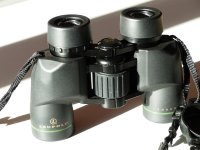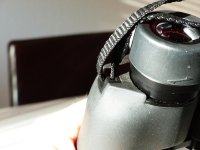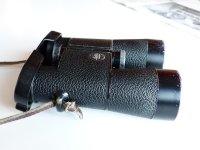I will be releasing this in two or three parts. This is part one.
After long consideration I bought a pair of 8x32 SFs. I am providing this review hoping it will help others with their process – spending an amount equal to half of the price of a halfway decent used car is a little tough, and it is worth being very completist in the decision. Even then, you will learn a lot after purchase – I’ve really come to realize you just won’t be able to get a full sense of a set of binoculars until you use them a lot in different settings.
A bit about me and how I use binoculars.
I am a pretty decent birder, but certainly not in the “master birder” category, but am in my mid 50s and have enjoyed birding and binoculars since I was a kid. I suspect at some point in my life (ie retirement) I will be more into it, but just not now, too busy. I live in Seattle, WA, USA, so sky conditions are often cloudy, water is a thing, and a fair amount of the birding is marine and forest oriented. Probably pretty similar to our UK brethren/sistren. However, the dry side of the state/US NW represents very different, dry open conditions. I do a lot of hiking, and also quite a bit of birding with a tripod/scope over my shoulder.
I am not much of a technical optics person, I am much more of a user, and this is written from this standpoint. In part, professionally I am a designer (though of very different scale and subject) but I appreciate industrial design from both functional and aesthetic standpoints.
My current binoculars.
I consider myself very much an 8x32 person. I think this is the sweet spot of portability, view, available light, weight, steadiness of view (magnification, size, and weight). I either own or have owned the following:
Zeiss Conquest HD 8x32
Nikon 8x32SE
Leica 8x32 BN
Nikon 8x30 EII
Vortex Viper 8x32 HD
Vortex Viper 8x32 standard
Canon 8x30 porros (really outstanding, from the 70s)
Swift Audubon 8.5x42 (my first serious binoculars)
As well as an array of small reverse porros, the standouts of which are the venerable B and L 7x26 compact custom v4, and the Nikon Mountaineer 2 8x25s.
I have been in love with each of these to greater or lesser extent, but in this sub-alpha category, the Zeiss have been the ones to beat. I will note however that my Nikon SEs were recently serviced by the Nikon East Coast US service center, and they are just better…they did something, I’m not sure what…and still taking that in.
As part of this purchase process, I also took close looks at both the Swaro 8x32 EL’s and the Leica 8x32 Ultravid 8x32 HD+’s. Those are both superb bins, but this is not a comparo, and I ultimately picked the Zeiss…though I will share my wife loves the Leicas (both the BNs and the Ultravids) so we may be doing an upgrade there too, and have them do double duty as travel/backpacking bins.
Wow, that’s a lot of context. Here we go.
First impressions
• Special view – a fair bit of majick and faerie dust going on
• Light, or the perception of lightness – impeccable balance
• Maybe not the most “lux” thing I’ve used for the price/size (vs. cameras, watches, audio, other bins, etc). But not terrible.
• Zeiss family character, nice design gestalt. Overall positive feeling visual, tactile, etc.
• Perhaps an “instant classic” in the line of great bins
Design – function
First off – balance, and weight distribution/lightness. These are light to start with, and the backweighting is not marketing fluff – it is really nice. I tend to jam binoculars into my eye sockets to stabilize/steady, and the balance with these in that scenario makes for a very restful, stable, comfortable gaze, for a long period. Perhaps a way less dorky version of the new Swaro NL forehead thingie...
Overall handling is excellent. This is my first open hinge bin, and I’m still not entirely sure what to think – but overall I think I like it. I actually like the length of the bins, as it gives some flexibility with hand placement – and the security of grasping the whole tube is nice. I am not sure though I love the focus knob forward – but maybe I just need to get used to it – I have tried to turn the diopter many times now instead of the focuser – but again that is habit. It could be that once I adjust I will like the handling balance. So far I have not disliked it, just found it different. I do find somehow the archetypally simple layout/design of the standard single hinge faced by a big focuser to be pretty nice and just so basic – sort of a “minimum viable product” layout which always appeals. The rubber is nicely grippy with the right amount of give for comfort and security. The tube shape (that Zeiss family dihedral at the 2 and 4 oclock position, also seen on the Conquest HDs) are nice for a bit of extra grip.
The focuser, as commented on elsewhere, is superb, and a highlight. I love it. Just the right amount of resistance/ease. Nice and chunky, easily accessible from a number of hand positions. The faux middle hinge is a nice functional touch to keep the focuser from getting bumped.
The overall build quality (exceptions noted below) seems excellent. I think these will prove tough, except as noted below.
However, there are three things from a function standpoint I don’t like.
The detents on the diopter are too spread out, and can result in a suboptimal setting, as others have noted (the diopter pulls out and pushes in for setting, similar to Leica, but with detents). This is such a simple thing and quite irritating. If the diopter resistance itself was stiffer, it wouldn’t matter so much, but in the “out” position there isn’t much. I guess you could make a workaround with an o ring (which would actually probably work pretty well – but really?).
The rollout, detented eyecups are just ok – and unfortunately the setting which I think is probably best, one click up, has a weak detent. I have found these moving on me in normal use – very irritating. At the price, I feel like we deserve better. However, so many manufacturers fall down in this area (the wonderful Leica BN sliding/retracting cups, finely designed, lack a badly needed detent at their sweet spot, as many know).
Finally, I am 95% sure the strap attachment points are plastic. I just don’t get that. These are legacy quality bins, and for sure some people (ie real field users) will break these – in cold, with UV, or just a heavy hit. They are exposed. Even the $650 Vortex Vipers have metal strap attachments. The Conquest HDs are plastic too, but chunkier. I would love someone to correct me on this, but they differ from the finish of the exposed magnesium pieces. Why oh why would you save money on this detail? You can bet no one has lost a BN or a Dialyt by breaking a strap connection and watching the bins slide off their neck… The gold standard to me for cool elegant smart strap attachments are the Nikon SEs…a detail not often commented upon, but beautifully cast, recessed, into the magnesium body. THAT is the way to do that. I have seen the photos of the SF castings and the strap attachments are not included. OK, ‘nuff said.
To be continued this weekend: Design - form, as well as the most important stuff - the view. Stay tuned!
After long consideration I bought a pair of 8x32 SFs. I am providing this review hoping it will help others with their process – spending an amount equal to half of the price of a halfway decent used car is a little tough, and it is worth being very completist in the decision. Even then, you will learn a lot after purchase – I’ve really come to realize you just won’t be able to get a full sense of a set of binoculars until you use them a lot in different settings.
A bit about me and how I use binoculars.
I am a pretty decent birder, but certainly not in the “master birder” category, but am in my mid 50s and have enjoyed birding and binoculars since I was a kid. I suspect at some point in my life (ie retirement) I will be more into it, but just not now, too busy. I live in Seattle, WA, USA, so sky conditions are often cloudy, water is a thing, and a fair amount of the birding is marine and forest oriented. Probably pretty similar to our UK brethren/sistren. However, the dry side of the state/US NW represents very different, dry open conditions. I do a lot of hiking, and also quite a bit of birding with a tripod/scope over my shoulder.
I am not much of a technical optics person, I am much more of a user, and this is written from this standpoint. In part, professionally I am a designer (though of very different scale and subject) but I appreciate industrial design from both functional and aesthetic standpoints.
My current binoculars.
I consider myself very much an 8x32 person. I think this is the sweet spot of portability, view, available light, weight, steadiness of view (magnification, size, and weight). I either own or have owned the following:
Zeiss Conquest HD 8x32
Nikon 8x32SE
Leica 8x32 BN
Nikon 8x30 EII
Vortex Viper 8x32 HD
Vortex Viper 8x32 standard
Canon 8x30 porros (really outstanding, from the 70s)
Swift Audubon 8.5x42 (my first serious binoculars)
As well as an array of small reverse porros, the standouts of which are the venerable B and L 7x26 compact custom v4, and the Nikon Mountaineer 2 8x25s.
I have been in love with each of these to greater or lesser extent, but in this sub-alpha category, the Zeiss have been the ones to beat. I will note however that my Nikon SEs were recently serviced by the Nikon East Coast US service center, and they are just better…they did something, I’m not sure what…and still taking that in.
As part of this purchase process, I also took close looks at both the Swaro 8x32 EL’s and the Leica 8x32 Ultravid 8x32 HD+’s. Those are both superb bins, but this is not a comparo, and I ultimately picked the Zeiss…though I will share my wife loves the Leicas (both the BNs and the Ultravids) so we may be doing an upgrade there too, and have them do double duty as travel/backpacking bins.
Wow, that’s a lot of context. Here we go.
First impressions
• Special view – a fair bit of majick and faerie dust going on
• Light, or the perception of lightness – impeccable balance
• Maybe not the most “lux” thing I’ve used for the price/size (vs. cameras, watches, audio, other bins, etc). But not terrible.
• Zeiss family character, nice design gestalt. Overall positive feeling visual, tactile, etc.
• Perhaps an “instant classic” in the line of great bins
Design – function
First off – balance, and weight distribution/lightness. These are light to start with, and the backweighting is not marketing fluff – it is really nice. I tend to jam binoculars into my eye sockets to stabilize/steady, and the balance with these in that scenario makes for a very restful, stable, comfortable gaze, for a long period. Perhaps a way less dorky version of the new Swaro NL forehead thingie...
Overall handling is excellent. This is my first open hinge bin, and I’m still not entirely sure what to think – but overall I think I like it. I actually like the length of the bins, as it gives some flexibility with hand placement – and the security of grasping the whole tube is nice. I am not sure though I love the focus knob forward – but maybe I just need to get used to it – I have tried to turn the diopter many times now instead of the focuser – but again that is habit. It could be that once I adjust I will like the handling balance. So far I have not disliked it, just found it different. I do find somehow the archetypally simple layout/design of the standard single hinge faced by a big focuser to be pretty nice and just so basic – sort of a “minimum viable product” layout which always appeals. The rubber is nicely grippy with the right amount of give for comfort and security. The tube shape (that Zeiss family dihedral at the 2 and 4 oclock position, also seen on the Conquest HDs) are nice for a bit of extra grip.
The focuser, as commented on elsewhere, is superb, and a highlight. I love it. Just the right amount of resistance/ease. Nice and chunky, easily accessible from a number of hand positions. The faux middle hinge is a nice functional touch to keep the focuser from getting bumped.
The overall build quality (exceptions noted below) seems excellent. I think these will prove tough, except as noted below.
However, there are three things from a function standpoint I don’t like.
The detents on the diopter are too spread out, and can result in a suboptimal setting, as others have noted (the diopter pulls out and pushes in for setting, similar to Leica, but with detents). This is such a simple thing and quite irritating. If the diopter resistance itself was stiffer, it wouldn’t matter so much, but in the “out” position there isn’t much. I guess you could make a workaround with an o ring (which would actually probably work pretty well – but really?).
The rollout, detented eyecups are just ok – and unfortunately the setting which I think is probably best, one click up, has a weak detent. I have found these moving on me in normal use – very irritating. At the price, I feel like we deserve better. However, so many manufacturers fall down in this area (the wonderful Leica BN sliding/retracting cups, finely designed, lack a badly needed detent at their sweet spot, as many know).
Finally, I am 95% sure the strap attachment points are plastic. I just don’t get that. These are legacy quality bins, and for sure some people (ie real field users) will break these – in cold, with UV, or just a heavy hit. They are exposed. Even the $650 Vortex Vipers have metal strap attachments. The Conquest HDs are plastic too, but chunkier. I would love someone to correct me on this, but they differ from the finish of the exposed magnesium pieces. Why oh why would you save money on this detail? You can bet no one has lost a BN or a Dialyt by breaking a strap connection and watching the bins slide off their neck… The gold standard to me for cool elegant smart strap attachments are the Nikon SEs…a detail not often commented upon, but beautifully cast, recessed, into the magnesium body. THAT is the way to do that. I have seen the photos of the SF castings and the strap attachments are not included. OK, ‘nuff said.
To be continued this weekend: Design - form, as well as the most important stuff - the view. Stay tuned!
Last edited:









